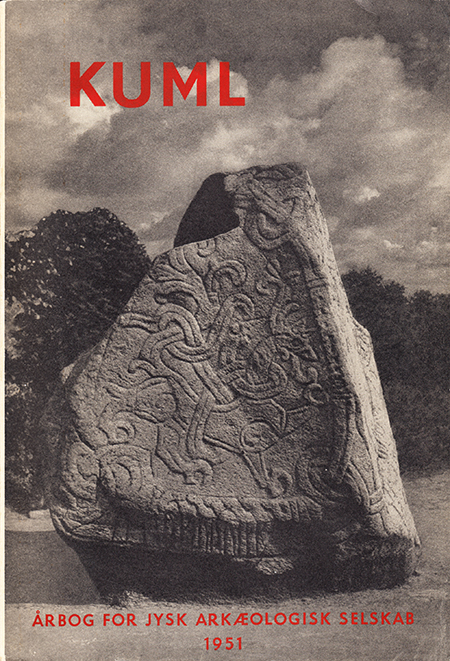En gravplads med dødehus ved Farre
DOI:
https://doi.org/10.7146/kuml.v1i1.24756Nøgleord:
Gravplads, Dødehus, FarreResumé
A Cemetery with "Death-house" at Farre
In 1948 a burial ground, dating from the Early Iron Age was discovered at Farre in Give parish, Vejle county.
Grave 1 was a weapon burial from the La Téne period; here, at a depth of 20 inches under the level ground surface, lay, in addition to burnt bone, a La Téne sword, a spearhead, a shield boss and portions of the shield ornamentation, all of iron (fig. 2-3).
Grave 2, also under a level ground surface, consisted of a pottery vessel with burnt bone. The vessel is Northwest German in form and can be dated to the period immediately before the commencement of our era (fig. 4).
Ascribed to the Early Roman lron Age, in the first centuries of the Christian era, Grave 6 consisted of an urn in which lay, among calcined bones, a single-edged iron knife and a crescent shaped iron razor (fig. 6).
A small pit (Grave 10) from the same period contained only the sherds of two pottery vessels.
Grave 4 belonged to the Later Roman Iron Age, the period 200-400 AD, and contained an urn full of burnt bone. Among the bones Jay a bronze belt buckle, a number of crumpled pieces of thin bronze plating and a small iron razor (fig. 5).
To the 4th century AD is ascribed a grave with a "death-house", Grave 9. This site was investigated by the National Museum and here was found an urn buried, containing burnt bone (fig. 10). Above the urn lay a shallow burnt layer, forming a patch 16-20 feet wide. Among the charcoal of this layer there was found a human eye-tooth, sherds of at least three different pots, fragments of a bronze vessel and parts of the bronze fitments of a wooden bucket, together with pieces of a bronze fibula of unidentifiable shape, small fragments of a glass vessel, 225 glass beads of varous colours and a number of unidentifiable fragments of silver and iron. The bronze, silver, glass and pottery show unmistakeable signs of having been in a fire. Around the urn and equidistant from it were 8 post holes, showing that a building had been erected in association with the grave. The building must have been square with a side of 16 feet (fig. 7-8).
The investigation showed that the body must have been burnt, outside the burial area, on a pyre together with its ornaments and burial furnishings consisting of vessels and buckets of pottery, wood, bronze and glass. After the cremation the fragments of bone were carefully collected and placed in an urn. After this urn had been buried at the place where it was found the remains of the pyre were spread out on the ground above the grave. Either before or immediately after the burial of the urn a building was erected over the burial place. This building was later removed and a mound of stones heaped up in its place, the whole complex being framed in parallel rows of stones (fig. 7).
Only 130 feet to the north-east of the burial place a house site was investigated by the National Museum (fig. 1). The house, the ground plan of which is given in fig. 11, was rectangular, with a width of 16 feet and a length of at least 49 feet, the longitudinal axis being in the direction WNW-ESE. The roof was carried by posts set in two rows about 5 feet within the walls. The walls appear to have been of wood supported by vertical posts which, at least at the west gable-end, were set on both sides of the wall. Two hearths, consisting of small stones, were found in the western end of the house. Of these the eastern hearth had a covering of clay over the stones, this being the only clay found in association with the house, the floor being of earth. Numerous pottery sherds were found on the hearth site (fig. 12). Several of these sherds were ornamented (fig. 13) and prove that the house should be dated to the Later Roman Iron Age, contemporary with Grave 9 on the burial site, the grave with the "death-house". Sherds and hearths found on the land east of the house show that further houses have stood on the site.
Knud Thorvildsen
Downloads
Publiceret
Citation/Eksport
Nummer
Sektion
Licens
Fra og med årgang 2022 er artikler udgivet i Kuml med en licens fra Creative Commons (CC BY-NC-SA 4.0).
Alle tidligere årgange af tidsskriftet er ikke udgivet med en licens fra Creative Commons.


